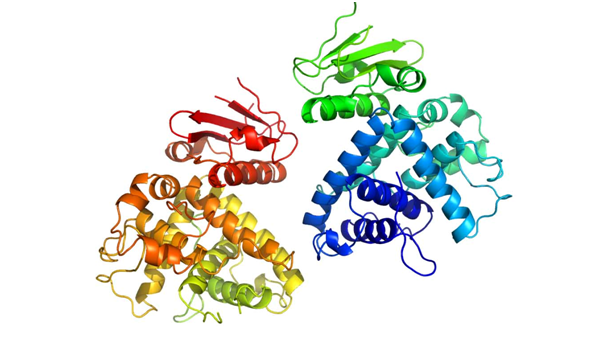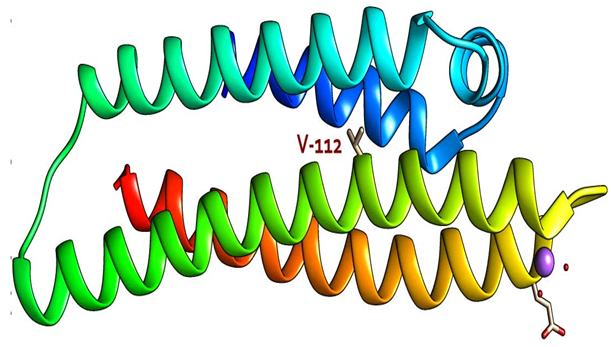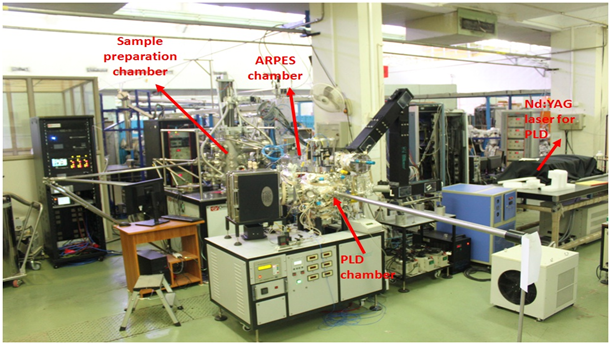

The BDAS is responsible for the development, maintenance, up gradation and utilization of beamlines at Indus Synchrotron Radiation Source, RRCAT, Indore.
BDAS is involved in conducting research in the areas VUV spectroscopy of environmentally active molecules as well as for electronic and structural studies of technologically important systems like functional nano-materials, thin films, materials for nuclear waste management application, protein system for drug design application etc.
In addition, BDAS is also responsible for coordinating the activities of BARC Beamlines Coordination Cell (BBCC) at RRCAT and facilitating various research groups including industries from all over the country for conducting experiments for their research projects using the beamline facilities.

 2/2021
2/2021Crystal structure of Txp40 insecticidal protein from Photorhabdus luminescence was solved by multiwavelength anomalous dispersion (MAD) experiments using seleno-methionine crystals of Txp40 at BL-21. The structural model was refined using PHENIX and COOT software to R-free factor of 26% at resolution of 2.3 angstrom. Txp40 is a monomeric protein and comprised of two domains, N- and C- domains. Dali search of all-alpha helical N-domain shows no significant structural homology to any of the structures in PDB suggesting new fold of this domain. C-domain is alpha-beta structure and shows significant homology to Antidote/antitoxin HigA protein of Proteas mirabilis gut bacteria.

 12/2020
12/2020The fact that how just one mutation can cause so much of functional differences in the case of the isoform ApoE4, compared to ApoE3, is a big puzzle for Alzheimer disease. For this, we are determining the mutants of ApoE4 and trying to get atomistic insights through MD simulations. Structure of the N-terminal domain of ApoE mutant protein was solved using BL21 and refined at resolution 1.45 angstrom with Rfree of 21%. Conventional and Gaussian Molecular Dynamics simulation of mutant and wild-type ApoE structure has revealed the conformational dynamics that may leads to aggregation of protein.

 10/2020
10/2020EXAFS measurement of Human Carbonic anhydrase I (hCA-I), a Zinc metalloenzyme, has been carried out for the first time at EXAFS beamline, Indus-2 using recently installed multi-element silicon drift detector based x –ray detection system. Purpose of this study was to investigate the possibility of performing biological EXAFS experiment at room temperature in solution phase.
CePO4 nanostructures (nanowires, nanoparticles etc.), when doped with suitable elements, are suitable for luminescence applications. Tb as the dopant can act as an activator in CePO4 host material exhibiting high intensity emission in a broad wavelength band ranging from ultra-violet to visible to depending upon synthesis parameters.
A dedicated trans-impedance amplifier based electrometer was designed, developed and deployed at Dispersive EXAFS beamline (BL-08), Indus-2 SRS. Performance testing of the developed system was carried with precision source as well as the SR beam at BL-08. The percentage error in the electrometer was observed to be < 0.4% and the positional resolution of Wire Beam Position Monitors was improved from 450 μm to ~125 μm with the current development.

 12/2018
12/2018An Ultra High Vacuum (UHV) compatible PLD System has been designed, developed, and retrofitted into the experimental station of the ARPES beamline. This system can be used for in-situ PES characterization of thin films. Recently this system has been used for valence band offset measurement of GaZnO/HfO2 hetero structure.
The Protein crystallography beamline has been designed for macromolecular crystallography i.e. diffraction studies on single crystals of protein, DNA and their complexes. It has also been designed to perform high-pressure studies using single crystal and powder diffraction experiments. The operational energy range of the beamline is 5-20 keV
The Scanning EXAFS beamline is designed to perform experiments which have requirements that fall beyond the capabilities of Dispersive EXAFS beamline like requiring high resolution & fluorescence mode of EXAFS measurements. The operational energy range of the beamline is 4.5 – 30 keV.
The DEXAFS Beamline (BL08) at Indus-2 is dedicated to X-ray absorption spectroscopy in the transmission mode, using dispersive optics. The entire EXAFS spectrum around an absorption edge is recorded in a single shot using a position sensitive detector in ~300 msec. The operational energy range of the beamline is 5-20 keV
The Angle Resolved Photo-Electron Spectroscopy Beamline has been set up at Indus-1 SRS for angle integrated as well as angle resolved PES studies on solid samples. The available photon energy range of the beamline is from 12 eV to 200 eV. The beamline has been recently upgraded with CCR (6 K) based Sample Manipulator and in-situ sample preparation facility.
A High Resolution Vacuum Ultraviolet (HRVUV) beamline has been set up at Indus-1 for photo-absorption studies of atoms and molecules in the wavelength region of 1050-3000 Å (3.5-11.8 eV).